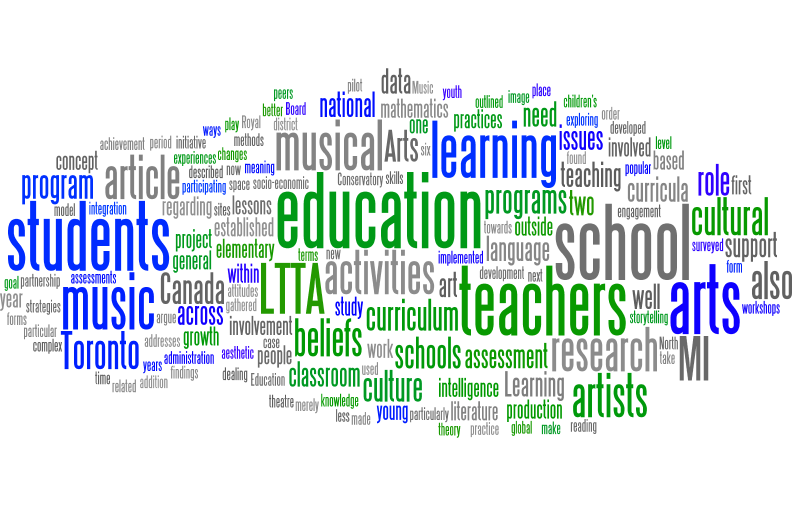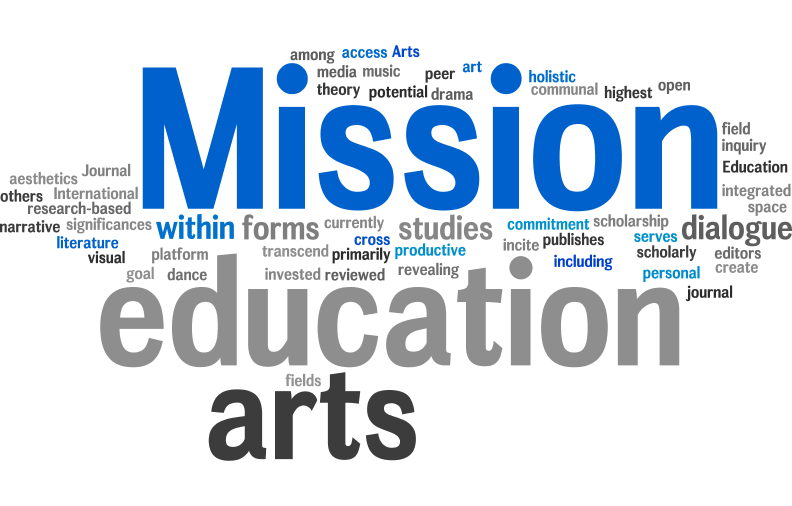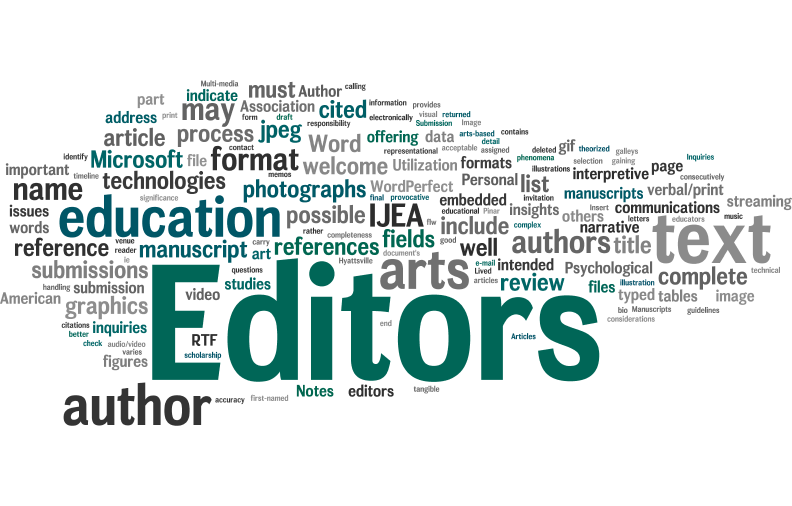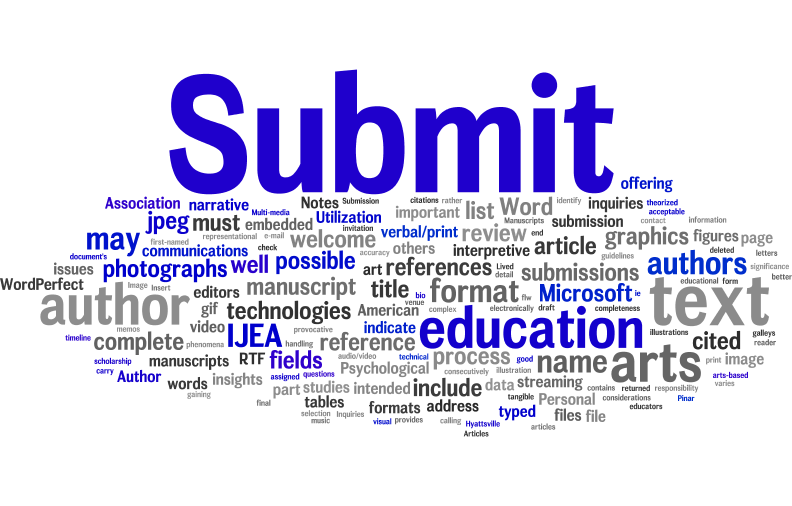2001 Volume 2
Articles and Abstracts

Articles
Volume 2 Number 1: Robin Mello "The Power of Storytelling: How Oral Narrative Influences Children's Relationships in Classrooms"
This article presents findings from an arts-based research projcet that took place in a fourth-grade classroom over the period of one school year. It examines the impact of storytelling on children's self-concept. In addition, it discusses how storytelling helped children process their social experiences in school.
Volume 2 Number 2: Bjorn Rassmussen & Peter Wright "The Theatre Workshop as Educational Space: How Imagined Reality is Voiced and Conceived"
In this article, we claim a concept of education that allows a space for dealing with sensuous impressions, examining knowledge, experiencing disconnections, re-experiencing meaningful connections and learning "how to know." This is a different form of education than where the emphasis is merely on the "flow of information." Arts education, we argue, should not be a practice that is pre-designed, and hence textually ordered and contextually controlled, in order to better serve the expectations of any societal or cultural institution. In claiming this space, we need to deconstruct both the concept of "Aesthetic" and "Education" in order to find new ways of organising an education that is both aesthetic and playful. What we argue is that Dramatic Knowing is a form within the broader concept of a "cultural aesthetic," and highlight cultural production as distinct from merely socialising young people to arts canons or using theatre as an under-developed curriculum tool. Recent studies of youth culture (as referred) show that young people make the most of the inter-textual play between fine art, popular art and everyday life, and it is in this area of "play" that we are able to uncover new models of drama education. In linguistic terms, dramatic knowing highlights a certain intentional, interactive, creative, and context-situated production of meaning. This production takes place in theatre workshops, and two forms of workshops are described that reflect arguments made about education, partnership and the potential for youth culture research.
Volume 2 Number 3: Paul Duncum "Theoretical Foundations for an Art Education of Global Culture and Principles for Classroom Practice"
The article begins with an outline of the theoretical foundations for an art education that addresses global culture. It reviews and critiques the widely held, popular theory of cultural imperialism that sees, typically, U.S. culture overshadowing and destroying national and local cultures. By contrast, the author argues that by employing reading reception theory and theories of indigenization and cultural translation, it is possible to see a vastly more complex set of cultural issues through which we need to navigate. The article concludes with principles for dealing with global culture in the classroom, as well as some examples of exemplary classroom practice.
Volume 2 Number 4: Susan W. Mills "The Role of Musical Intelligence in a Multiple Intelligences Focused Elementary School"
The role of musical intelligence was investigated at a Central Florida elementary school. Four participating teachers implemented the Theory of Multiple Intelligences (MI) by Howard Gardner in their classroom curricula. Extent and quality of musical experiences, corresponding assessments, and comparison with representative schools from MI literature were examined through case study data collection methods. Only one assessment for musical growth and one assessment for musical ability were found in the MI literature. No such assessments were present in the school setting. Influences on the role of musical intelligence included perceptions about: MI, music integration, musical growth, assessment of musical growth and assessment in general. Political climate at the school and district were also cited as highly influential in determining the role of musical intelligence in the school's MI curriculum. Recommendations to correlate MI learning strategies and music activities with Sunshine State Standards benchmarks learning, and to allow time and resources for such training, were suggested by participating teachers. Other recommendations include greater contributions to MI literature from the arts education community, music specialist involvement in curriculum planning, and support from school and district administration.
Volume 2 Number 5: Colin Durrant "The Genesis of Musical Behaviour: Implications for Adolescent Music Education"
This article addresses some of the concerns regarding music education for the secondary school/adolescent age range. Many tensions are highlighted--the apparent lack of success and engagement by students, yet at the same time, their almost universal need to identify with music within particular sub-cultures. Reference is made specifically to the curriculum in schools for England and Wales and the reports which suggest that all is not well. Inasmuch as it is a complex issue, some illustrations and solutions are outlined, though only as suggestions for exploring a way forward.
Volume 2 Number 6: Nitzan Ben-Shaul "Outline of a Developmental-Cognitive Approach for Comprehending the Art of Cinema"
Volume 2 Number 7: Angela Elster: "Learning Through the Arts: Program Goals, Features, and Pilot Results"
This article describes an artist-teacher-institutional collaboration that began in Toronto, Canada, in the mid-1990s, and that has grown to become national initiative. "Learning Through the Arts" (LTTA) was established in 1995 by The Royal Conservatory of Music, a national leader in preschool and music education programs, and was soon to change the ways in which 60 artists, 200 teachers and 4,000 students in Toronto approached and experienced public education. The initiative grew out of a response to the need to expand learning opportunities for young people in schools. The project involves an approach to learning through the arts, where the arts are used to access concepts and make meaning. The structure of the program is outlined in the paper, as well as some initial research findings. The five year pilot project, which developed and tested the model that is now being implemented with over 20,000 students in six additional cities across Canada, involved Toronto artists in partnership with the former North York Board of Education (now the Toronto District School Board). After a short period, LTTA garnered the support of artists, teachers, principals, and upper administration. Research on the Toronto pilot has indicated that students' attitudes towards school curricula have improved, that teachers have gained confidence and skills related to teaching from an arts-infused perspective, and that administrative practices were changed to increase support for arts curricula after involvement with LTTA.
Volume 2 Number 8: Rena Upitis, Katharine Smithrim, Ann Patteson & Margaret Meban: "The Effects of an Enriched Elementary Arts Education Program on Teacher Development, Artist Practices, and Student Achievement"
"Learning Through the Arts" (LTTA) is a school transformation project developed by The Royal Conservatory of Music (Canada). The first elementary schools were founded in Toronto, Ontario, in 1995, and LTTA is currently operating in elementary schools in 7 urban and rural sites across Canada. LTTA is designed with the goal of engaging students deeply in learning, through carefully designed math, science, history, geography, and language units that incorporate performing and visual arts into the learning process. This goal is achieved through a structured program of teacher development which includes the involvement of artists who work along with teachers to develop curricula. LTTA offers effective and sustainable professional development programs, based on the sharing of knowledge and skills between teachers, artists, and students, through multi-year partnerships. Artists model techniques and activities for teachers to implement in their classrooms and also work directly with students in schools.This articledescribes the baseline data gathered as the first part of the evaluation of the national LTTA program, for the students, teachers, parents, and administrators involved in the six sites that were established in 1999. Preliminary data were gathered over the 1999-2000 year. Canadian Achievement Tests (CAT/3) were used to assess students' performance in vocabulary, reading comprehension, and mathematics. In addition, writing samples were taken and scored holistically. Students also completed a survey indicating their interests in schooling in general and in the arts in particular, as well as in the activities they engaged in outside of school. Parents were asked to report on language(s) spoken at home, leisure activities, household income level, and the mother's education level. Teachers were surveyed regarding a variety of teaching beliefs and practices. Administrators were surveyed regarding their support for arts activities, both in terms of human and financial resources. Baseline data indicate that there are clear correlations between achievement in mathematics and language and engagement in arts activities, particularly with respect to music lessons (outside of school). That is, students who take music lessons outside of school perform significantly better on all language and mathematics measures than their peers who do not take music lessons. Not surprisingly, socio-economic status is also clearly related to arts activities and achievement, and strategies for tracking changes within socio-economic groups over the next two years of the study are planned. It was also found that attitudes towards various art forms are established in students as early as the first grade, with boys being less interested and perceiving themselves as less skilled, for example, in singing and dancing than their female peers. Hypotheses and general issues for consideration for the next two years of work are described, and methods for exploring those issues and hypotheses are also discussed.
Volume 2 Number 9: Kit Grauer, Rita Irwin, Alex de Cosson & Sylvia Wilson: "Images for Understanding: Snapshots of 'Learning through the Arts'"
In this article, we examine, in images and text, a case study of two artists and the teachers at an action research school involved in the "Learning through the Arts" program. We are guided by the following research question: What changes occur in the artists' and teachers' beliefs about learning and teaching as a result of this program? Emerging from the research are several themes under the umbrella of beliefs about teaching and learning: the role of the researchers and image based methodology in affecting beliefs; the role of the children's response in shaping beliefs; and integration in an arts infused curriculum. Given the rising interest in artist-in- residence programs across North America, and particularly the Learning through the Arts programs across Canada and internationally, this image based educational research contributes valuable insights into the beliefs, practices, and issues surrounding such programs.
Volume 2 Number 10: Donald Blumenfeld-Jones: "Partial Stories: An Hermeneutic Account of Practicing History"
An essay review of Janice Ross's (2000) Moving Lessons: Margaret H'Doubler and the Rise of Dance in American Education (University of Wisconsin Press).



